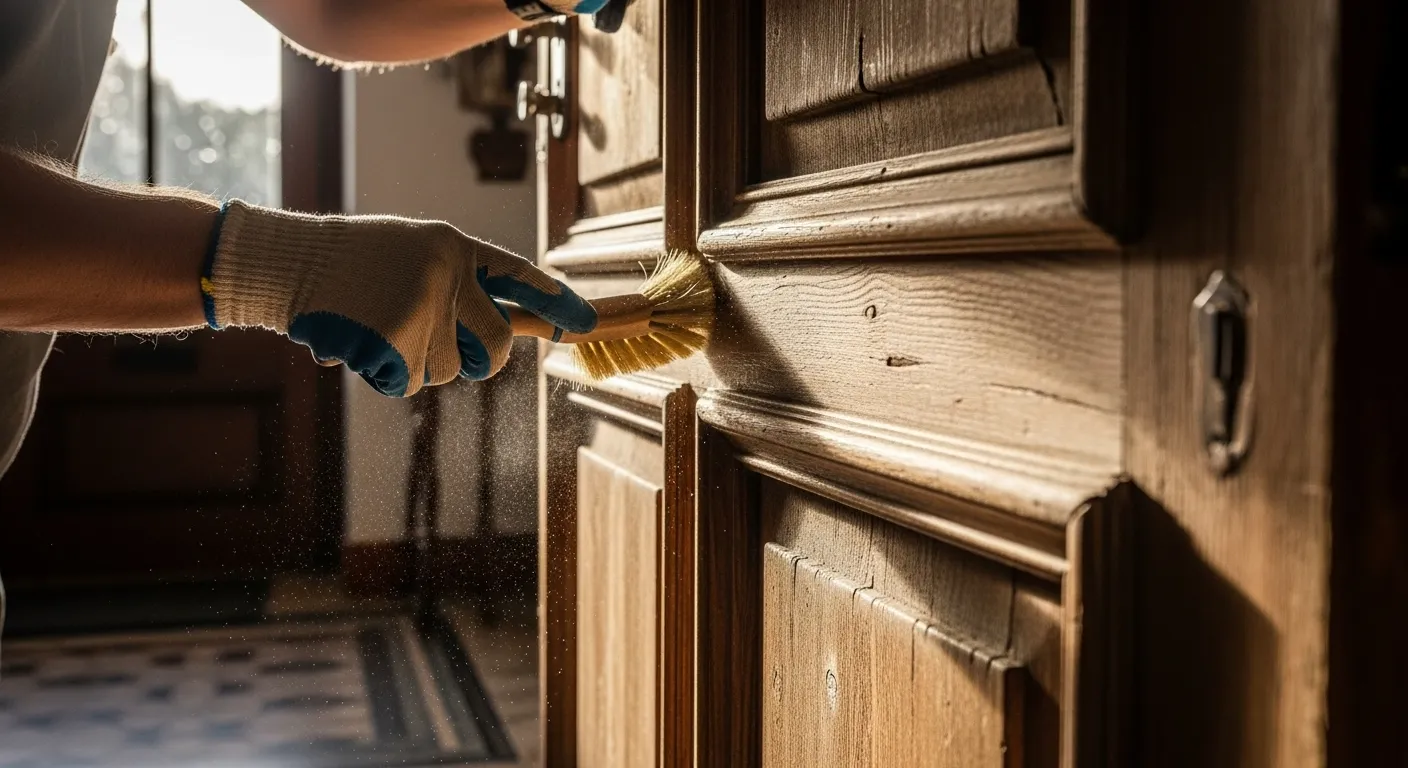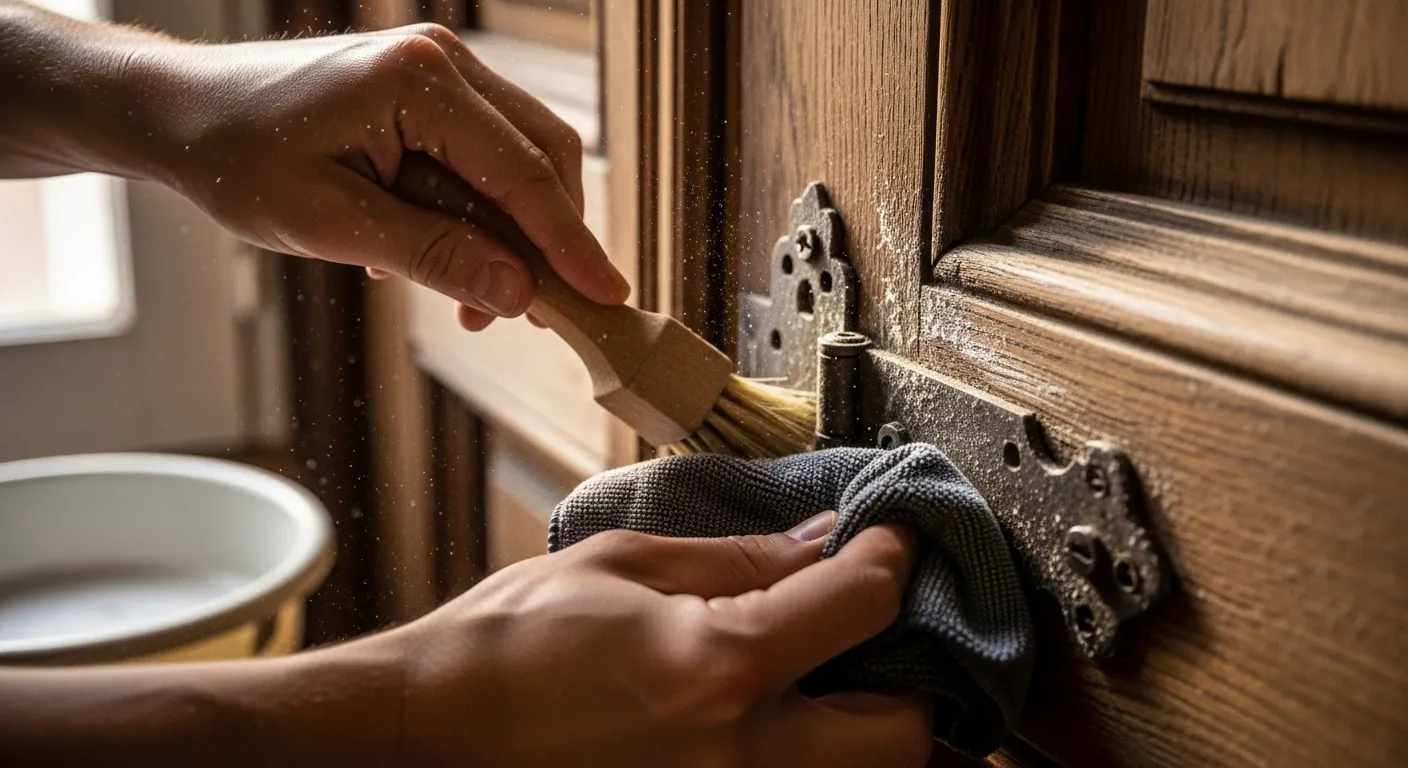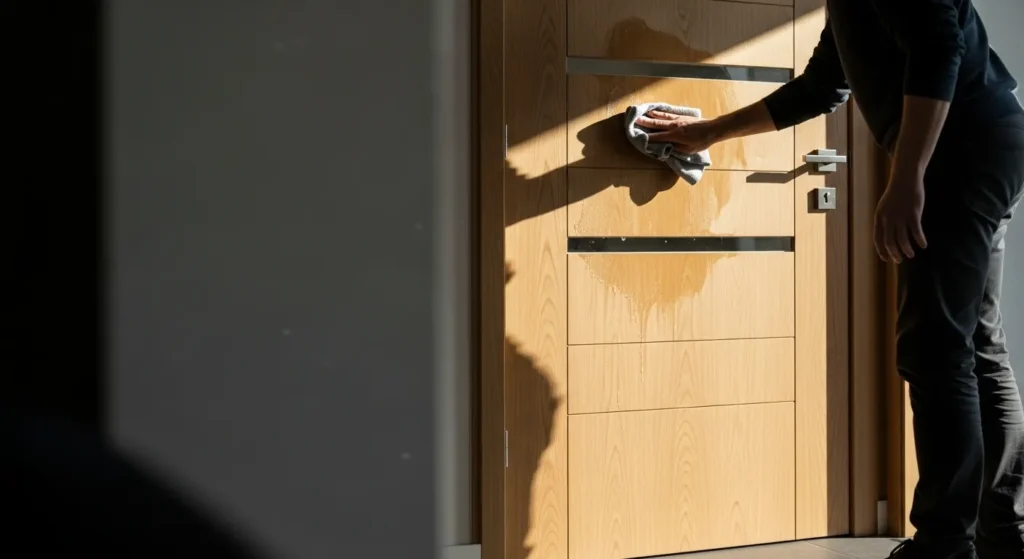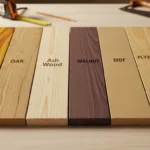Best Techniques to Clean Wooden Doors at Home (No Damage Tips!)
Here’s the problem: most people ruin their doors with good intentions. Wiping it down with the wrong cloth. Using cleaners that remove all the shine. Leaving residue or permanent damage.
You don’t need another DIY hack off the internet. What you need is an expert-backed way to clean your wooden doors without damaging the finish, the grain, or the polish. In this blog, we’ll break down the exact techniques used in Dubai’s finest villas and residences.
Why Cleaning Wooden Doors Needs Special Care
Wood isn’t like tile or plastic. It breathes, absorbs, and reacts.
A little too much moisture, and your door gets swollen or warped. If you scrub too hard by accident.. The polish starts to peel off. Each wood type reacts differently. Oak holds strong but stains fast. Walnut should never be wiped by acidic cleaners. Mahogany loses its shine if rubbed dry. Veneer? One wrong move and the surface layer bumps up.
Now just add Dubai humidity, and your cleaning method becomes a make-or-break move. That’s why wooden doors need smart care., not just a random wipe-down.
Mistakes People Make While Cleaning Wooden Doors
Most wooden doors don’t lose their shine because of time, they lose it because of bad cleaning habits. A wet cloth seems like no problem, but on wood? It invites moisture damage deep into the grain. Then there are those “all-purpose cleaners”. Yes, they are great for tiles but terrible for timber.
People often forget the hinges and corners too. They let dust and dampness build in those areas. Another common one? Spraying door polish on a dirty door. That doesn’t clean… it seals the grime in. And here’s the interesting part: not all doors are the same. What works for a polished walnut bedroom door could ruin your outdoor teak slab very badly.
The Right Way to Clean Wooden Doors (Step-by-Step)
Now you know that cleaning a wooden door isn’t just about wiping the surface and walking away. If you’re not careful, you might end up leaving permanent marks. Below is a precise, damage-free method trusted by interior professionals in Dubai’s most high-end homes.
1. Dust First — Always
Before anything touches water, remove surface dust with a clean microfiber cloth. Dust buildup acts like fine sandpaper. Rub it with moisture and you’ll scratch the finish.

2. Mix a Safe, No-Damage Cleaning Solution
Skip the harsh store-bought sprays. Mix your own:
2 parts lukewarm water, 1 part white vinegar, and a drop of mild dish soap.
This combo lifts grime without damaging polish or staining natural grains. If you’re unsure, test it on a small corner first.
3. Wipe With the Grain, Not Against It
Use a soft cloth, dipped and wrung out. Follow the direction of the wood grain. Why? Wiping against it pushes dirt into the natural ridges and causes streaks.
4. Get Into Hinges, Grooves & Edges
Corners and hardware areas collect gunk that a cloth can’t reach. Use a soft toothbrush or cotton swab to clean them gently, without scratching.

5. Dry Instantly With a Fresh Cloth
Moisture is wood’s enemy. Always dry the surface immediately after cleaning using a second, completely dry microfiber towel.
6. Polish Only When Needed (And Never Too Much)
If the door looks dull, apply a tiny amount of beeswax or oil-based wood polish. Avoid silicon sprays—they create buildup and attract more dust long-term.
7. Avoid Over-Moisture on Veneer or Painted Doors
Veneer wood is thin and more sensitive. Use barely damp cloths, and stay away from soaking corners. Even a few extra seconds of standing moisture can cause bubbling or warping.
Pro Tips Based on Your Door Type
Not all wooden doors are made the same — and treating them like they are is the fastest way to dull finishes or trigger long-term damage. Here’s how to handle each door type the smart way:
- Polished Solid Wood Doors
These doors shine for a reason — they’re layered with protective finishes. Use a high-quality oil-based polish every two weeks to keep the surface hydrated and gleaming. Avoid alcohol-based cleaners; they strip away the shine. - Painted Wooden Doors
Vinegar and acidic mixes are a no-go. They wear down the paint and can cause patchy fading. Use a damp cloth with mild soap and follow up with a dry wipe to avoid moisture marks. - Veneer Doors
Thin but stylish, veneer doors hate water. Clean with barely damp microfiber and dry instantly. Any lingering moisture can cause the surface to bubble or peel. - Outdoor Wooden Doors
Sunlight is brutal in the UAE. Use UV-protection wood polish once a month to prevent cracking and color fade. Look for polishes with SPF-grade wood defense. - Doors with Carvings
Dust loves hiding in carved details. Use a soft-bristle brush or vacuum tip to lift buildup without scratching the wood.
Handle each door based on its material, not guesswork. That’s how you keep the luxury intact..
When to Call a Pro (And Why It Matters)
Sometimes, no amount of vinegar, polish, or careful wiping will fix the problem.
If your wooden doors show deep sun bleaching, persistent water stains, peeling varnish, or visible fading in high-touch areas, it’s time to bring in a professional. These aren’t surface issues. They’re signs the wood has already suffered damage beneath the finish.
DIY maintenance works for upkeep. But restoration? That’s a different game. It needs precision sanding, stain-matching, and re-sealing, without harming the wood grain or door structure.
We’ve helped homeowners from Downtown Dubai to Palm Jumeirah restore their door’s finish—without streaks, fading, or fiber damage. Want your interiors to feel fresh again?
Book your door care consultation today. (We handle it like it’s our own home.)










